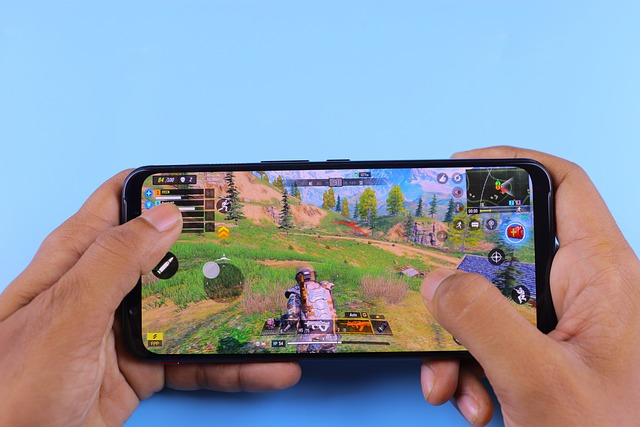In the high-stakes world of online gaming, victory and defeat are often separated by milliseconds. You line up the perfect headshot, you throw the crucial ability, or you make a desperate push for the objective—only to be met with the infuriating, jerky movement of lag. Your character rubberbands backwards, your shots seemingly pass through enemies, and before you know it, you’re staring at a “You Are Eliminated” screen. This digital nightmare is almost always caused by one thing: high ping.
Understanding what ping is, how it affects your gameplay, and most importantly, how to control it, is the single biggest upgrade you can make to your gaming setup—even more than a new keyboard or mouse. This guide will demystify network performance, teach you how to accurately test game ping, and provide actionable steps to minimize it for a buttery-smooth experience.
What is Ping, Anyway? The Language of Latency
Ping, in its simplest terms, is a measure of latency. It’s the reaction time of your connection. Measured in milliseconds (ms), it represents the time it takes for a small packet of data to travel from your computer to a game server and back again.
Imagine it like this: You’re having a conversation with someone. Your ping is the delay between when you ask a question and when you hear their answer. A low ping (e.g., 10-30ms) is like talking to someone in the same room—the conversation is instant and natural. A high ping (e.g., 100ms+) is like talking to an astronaut on the moon—there’s a noticeable, awkward delay that makes normal interaction difficult.
In gaming, this translates directly to your actions:
- Low Ping (< 50ms): Excellent. Your actions (shooting, moving) are registered by the server almost instantly. This is the ideal competitive environment.
- Medium Ping (50ms – 100ms): Playable. You might notice a very slight delay, but most games will still feel reasonably responsive.
- High Ping (100ms – 150ms+): Problematic. This is where noticeable lag, rubberbanding, and delays become prevalent. Your gameplay experience suffers significantly.
- Very High Ping (200ms+): Unplayable. Severe lag makes any competitive gameplay impossible. You’ll be shot around corners and your inputs will feel ignored.
Why You Must Test Your Game Ping Regularly
You wouldn’t drive a car without occasionally checking the speedometer, so why game without checking your ping? Assuming your connection is “fine” because websites load quickly is a classic mistake. Web browsing uses bandwidth, but online gaming is all about latency and stability.
Regularly testing your ping serves two crucial purposes:
- Diagnosis: It identifies if lag spikes, stutters, and packet loss are caused by your internet connection or by other factors like your hardware or the game server itself.
- Baseline Establishment: It gives you a performance baseline. By knowing your average ping, you can accurately measure the impact of any changes you make to your network or setup.
The most accurate way to test your connection is not just by looking at the in-game network display, but by using specialized tools that can give you a detailed readout before you even enter a match. A reliable and easy-to-use tool for this is available from dedicated services. This kind of tool measures your connection quality to various global data centers, helping you identify the best server regions for you before you play.
The Special Case of Battle Royale: The Importance of a PUBG Ping Test
Battle Royale games like PUBG: Battlegrounds are particularly sensitive to ping issues. With 100 players on a massive map, all interacting simultaneously, the server is under immense strain. A high ping doesn’t just mean you see enemies a fraction of a second later; it can create peeker’s advantage (or disadvantage), make vehicle handling feel sluggish, and cause your shots to miss even when your aim was true.
Conducting a dedicated PUBG ping test is therefore critical for any serious player. This involves more than just a general test; it means finding a tool that can specifically simulate a connection to PUBG’s servers around the world. By using a service designed for this purpose, you can get a precise measurement of your latency to the actual servers you will be playing on. This allows you to manually select the lowest-ping server region in the game’s settings, ensuring you’re not accidentally connecting to a distant data center and putting yourself at an unnecessary disadvantage before the match even starts.
Actionable Steps to Lower Your Ping and Eliminate Lag
Now for the solutions. If your ping tests reveal a problem, here’s what you can do about it.
- Use a Wired Ethernet Connection: This is the number one, non-negotiable rule for competitive gaming. Wi-Fi is susceptible to interference from walls, other electronics, and even your neighbor’s network. A direct Ethernet cable provides a stable, consistent, and faster connection, drastically reducing ping and packet loss.
- Close Background Applications: Programs like streaming services (Netflix, YouTube), cloud storage apps (Dropbox, OneDrive), and large downloads (Steam, Epic Games) consume massive amounts of bandwidth in the background. Always close them completely before launching a game.
- Choose the Right Server Region: Always manually select the game server that is geographically closest to you. Connecting to a server on another continent will guarantee a high ping. Use your ping test results to inform this choice.
- Upgrade Your Router: An old, outdated router may not be able to handle the demands of modern online gaming, especially in a busy household. Investing in a modern, quality-of-service (QoS) enabled router allows you to prioritize gaming traffic over other devices on your network.
- Contact Your Internet Service Provider (ISP): Sometimes, the issue is on their end. Inquire about your internet plan. While download/upload speed is important, also ask about their routing policies. You may be experiencing high ping due to inefficient routing paths to the game servers. In some cases, they can help optimize this.
- Consider a Gaming VPN (Wait, What?): This seems counterintuitive, as a VPN typically adds a small amount of latency. However, a specialized gaming VPN service can sometimes provide a more direct and efficient route to the game server than your standard ISP connection, bypassing congested network hubs. This can actually lower your ping and stabilize your connection if your ISP’s routing is poor.
Conclusion: Ping is Power
In the relentless pursuit of gaming excellence, every advantage counts. While you practice your aim and game sense, don’t neglect the foundation of it all: your connection. By understanding ping, testing it proactively with the right tools, and implementing the solutions outlined above, you can transform your online experience from a frustrating slideshow into a seamless, responsive, and truly competitive environment. Stop struggling against lag and start leveraging a low-latency connection as your greatest unseen weapon.






